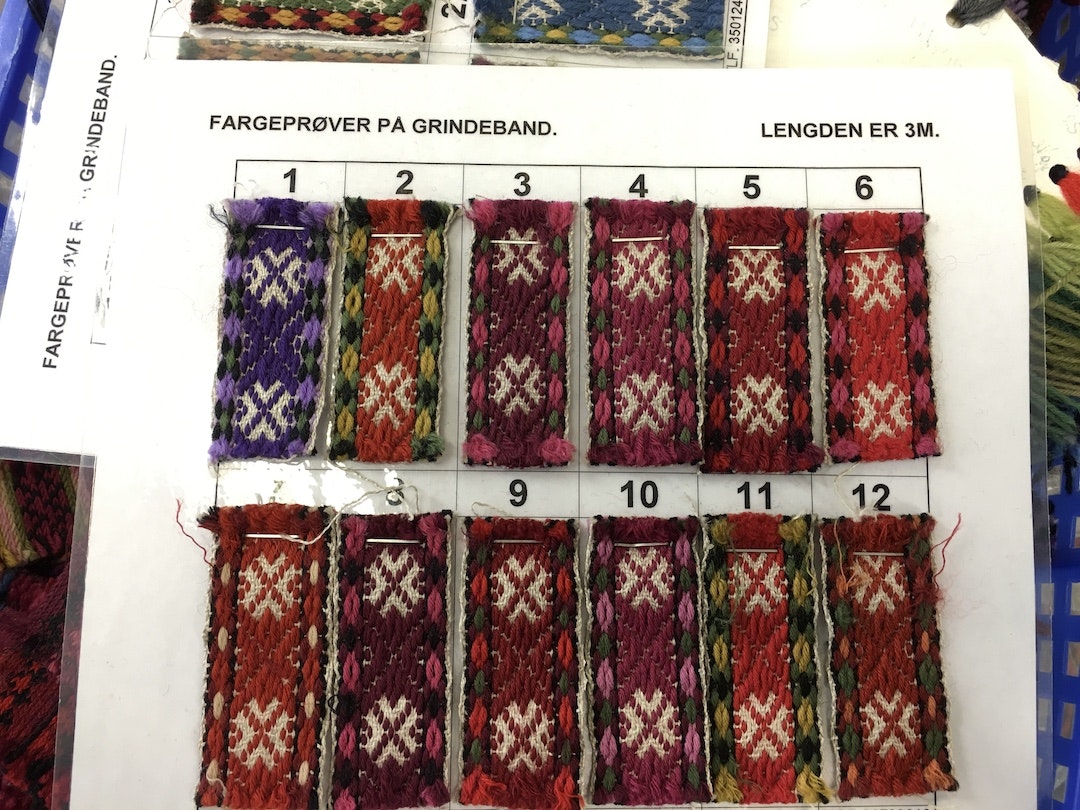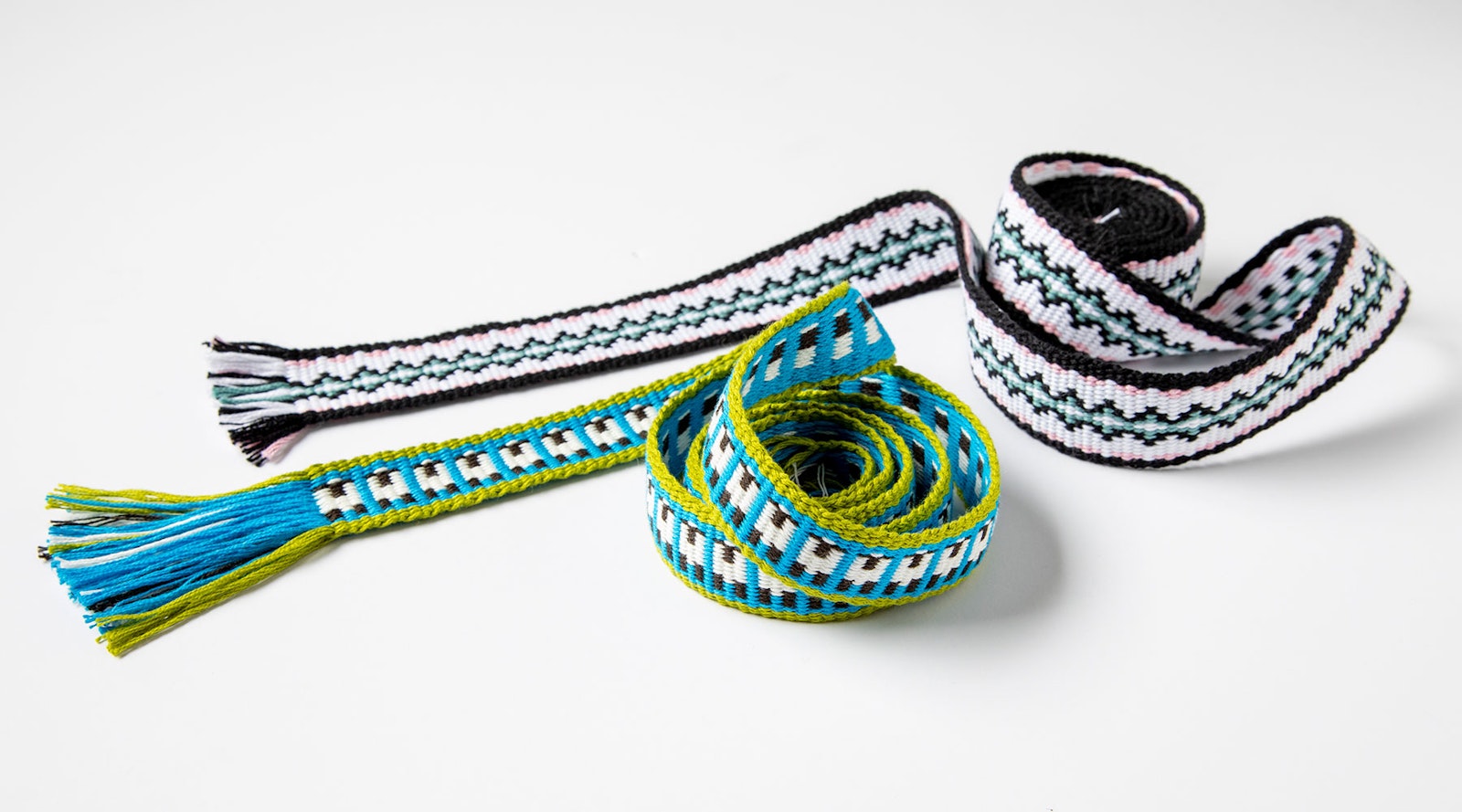Have you ever wondered about the different techniques for creating patterns on an inkle loom? We asked Joan Sheridan, accomplished inkle weaver and teacher, to explain a few of the most common methods. For this first part, she covers turned krokbragd, simple pick-up, and Baltic pick-up. —Christina
An infinite number of color combinations can be made weaving plain-weave bands on the inkle loom. But, what’s next? Is there more that you can do? Absolutely!
Turned Krokbragd
Once you have the mechanics of dressing the loom and weaving a uniform band down, a good next step is to weave turned krokbragd. This is a loom-controlled weave that requires no pick-up but does provide a little latitude for patterning. You can weave figures or geometrics or even use the three sheds the structure allows and create landscapes and other nontraditional patterns. It is “tight” design—you are closely bound by the structure. Going from the possibility of two sheds to three sheds exponentially increases design potential.
Simple Pick-Up
The next level of making patterns on the inkle involves manipulation of the warp—which means some kind of pick-up. At the most basic, you can try pick-up on a plain-weave warp by simply picking up an unheddled warp thread and bringing it to the top when it would otherwise be in the down position. Doing this allows you to create dots and dashes and add a new dimension. With this kind of pick-up, the weft is visible on the back of the band. The thread or threads that are lifted must be woven in their normal shed every three picks, although when using very fine yarn you can stretch it to every five picks.
Baltic Pick-Up
Baltic-style pick-up is probably the most common type of pick-up, and is often the next step for many weavers. Baltic is used in the bands of Eastern Europe, Scandinavia, and many other countries. Patterning is created by using a warp pattern thread that is twice the size of the background. Because the fabric created behind the pattern is basketweave, it is best to use the same color weft thread as the warp thread in the pattern area. The pattern thread is often wool with a background of cotton or linen. Of course, different cultures use different combinations of yarns, but this is a good place to start.
 Joan saw these examples of Baltic pick-up in a bunad shop in Norway. Notice the difference in thickness between the warp and weft. Photo by Joan Sheridan
Joan saw these examples of Baltic pick-up in a bunad shop in Norway. Notice the difference in thickness between the warp and weft. Photo by Joan Sheridan
In truth, this is not only pick-up, but also “drop off.” The pattern threads are manipulated both up and down as needed to facilitate the pattern. Starting with only five pattern threads gives good practice in moving the threads and creating the pattern. Patterns may have an even or odd number of threads, depending on the design. A pleasing pattern is created on the back of the band, making these bands two-sided. Picking up and dropping can be done with finger manipulation, a netting shuttle, or through the use of a special heddle.
Letters can be woven with this loom set up, which is a fun way to start because the pattern is already familiar and mistakes are seen quickly.
Stay tuned for Part 2, where Joan will explain pebble weave. Also, if you're curious about turned krokbragd, make sure to check out Joan’s video course Weave Turned Krokbragd on an Inkle Loom.

